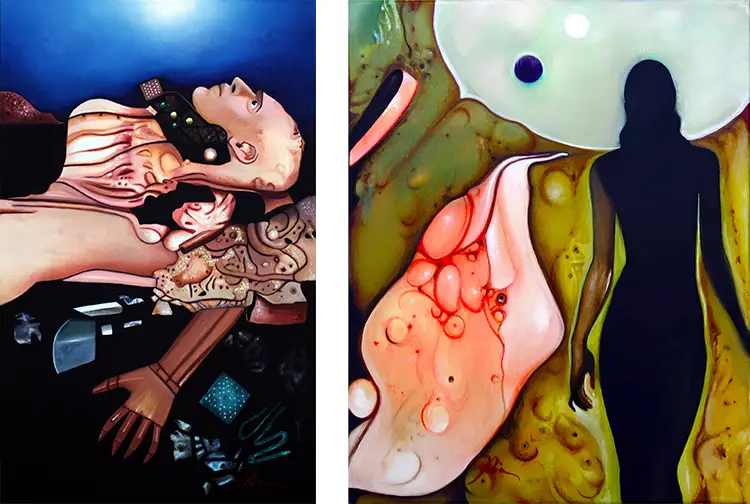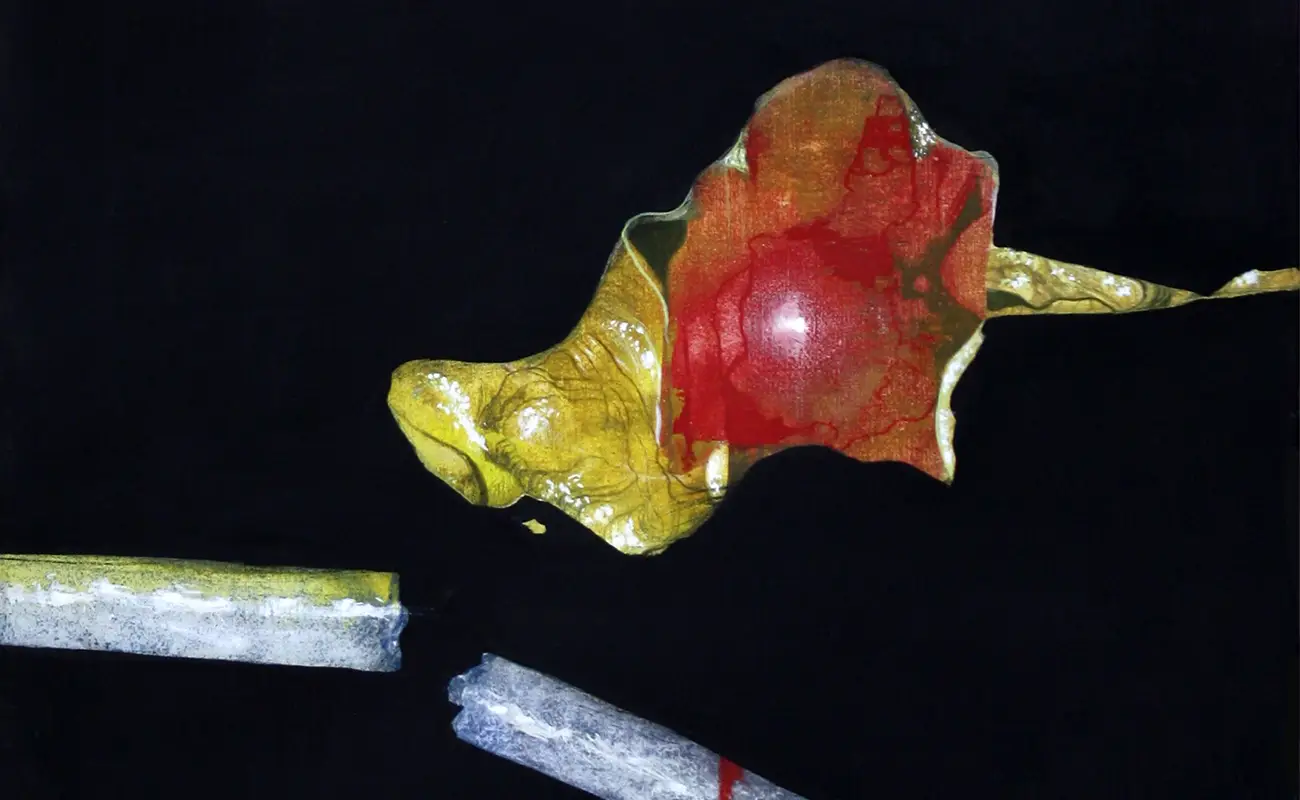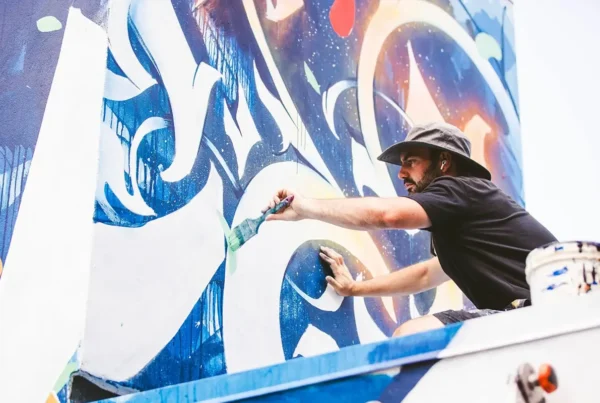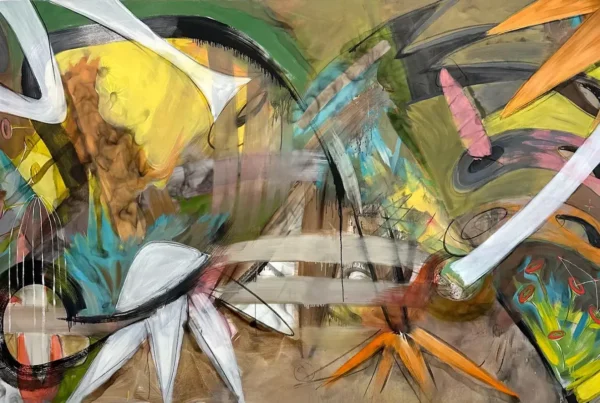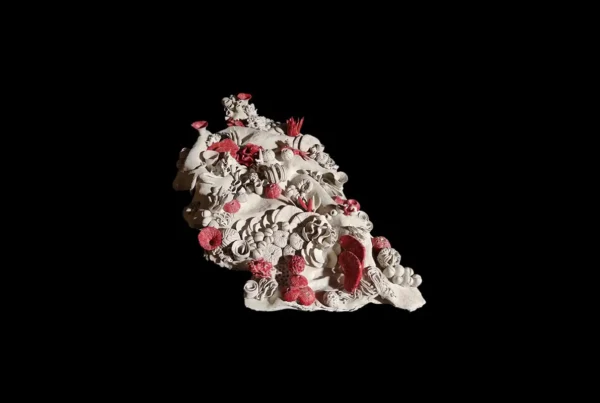“Be true to yourself. Clearly, you’re not meant to paint flowers.”
The Memory Theater of Beginnings
Rodica Alecsandra Petrescu’s journey into painting is deeply entwined with an early sensitivity to storytelling, sound, and the subtle poetry of atmosphere. Growing up in Bucharest, Romania, she developed a rich inner world inspired not only by visual stimuli but also by the auditory magic of children’s radio programs. At five years old, she found herself absorbed in narrated tales like Andersen’s The Snow Queen and The Little Match Girl, or Collodi’s Pinocchio, broadcast by actors who infused emotion and mystery into every word. This early immersion in the imaginative dimension of language and sound planted seeds that would later surface in her work. A pivotal childhood memory remains the time her father took her to see King Lear. She was only seven, yet the gravity of the performance left a permanent mark, prompting her to pursue literature, drama, and recitation. These early experiences shaped her understanding of emotion, illusion, and the power of narrative — foundational elements in her later paintings.
Her academic path solidified this foundation, combining two distinctive cultural and artistic environments. Petrescu earned a Bachelor of Fine Arts in Painting from the Academy of Fine Arts in Bucharest, a rigorous institution known for cultivating classical and philosophical approaches to the visual arts. Later, she continued her education in the United States, completing an AAS in Textile Design at the Fashion Institute of Technology in New York City. Since 1996, she has lived and worked in upstate New York, raising two children while continuing to build a singular body of work. This geographic and cultural transition allowed her to merge Old World intellectualism with a modern, personal search for expressive freedom. Her work is not confined by tradition, but rather shaped by it, offering viewers an intimate window into a philosophical and deeply emotional sensibility.
Her childhood love of clouds, radio dramas, poetry, and literature evolved into a visual language that favors the metaphysical over the literal. A passion for illusion and inner landscapes led her to prefer painting over theater. The pivotal moment came when she visited the Academy of Fine Arts and observed students at work. Instantly, she recognized that painting could offer what theater could not: the capacity to construct entire universes without scripts or performers — a private stage where color and form alone generate feeling, conflict, and resolution. Her artistic philosophy was shaped early on by reading The Letters of Vincent van Gogh, a book recommended by a fellow student. The raw emotion and vulnerability of van Gogh’s correspondence offered a glimpse into the enduring trials of the artistic path, reinforcing Petrescu’s conviction that only authentic, deeply-felt art can withstand the passage of time.
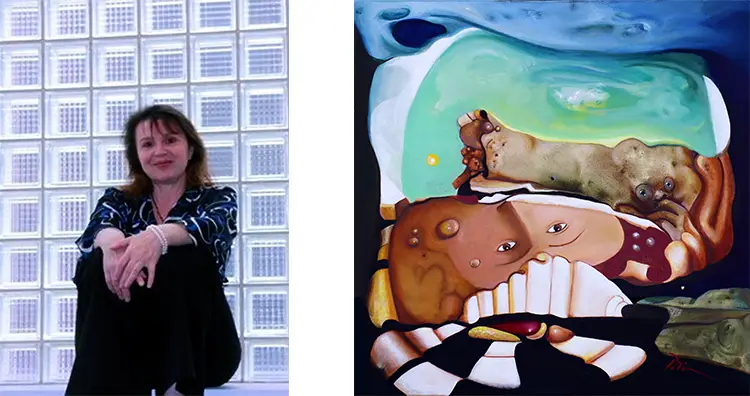
Rodica Alecsandra Petrescu: Beyond Representation, Toward Inner Truth
The trajectory of Petrescu’s style has never followed superficial trends or easily marketable genres. From her earliest efforts, it was evident that her purpose lay in bringing internal realities to light rather than replicating visible surfaces. Although she once considered painting a series of floral canvases during a particularly difficult time in her life, she quickly recognized that such representational work did not reflect her deeper calling. It was a conversation with a longtime colleague that helped crystallize this realization. He reminded her that throughout their five years of studying together, she had never shown interest in painting flowers. His advice was both firm and freeing: stay true to the inner artistic vision that seeks to portray what exists beneath the surface, not what is easily observed. That encouragement not only dissolved her doubts but led to the creation of some of her most memorable early works.
The paintings that emerged from this revelation — titles such as The Unseen Attraction Force of Evil, The Night of a Troubled Specter, Transit, The Blue Lagoon, and Genesis — formed a powerful series of 17 compositions that became the centerpiece of her first solo exhibition. The show was not only a financial success but also received warm recognition from critics, collectors, and journalists alike. These works marked a definitive pivot toward a practice she now describes as a blend of Metaphysical Painting and Metarealism. Her style, while rooted in figurative tradition, carries a depth of psychological tension and symbolic ambiguity that pushes it far beyond surface imagery. Each painting seeks to materialize the invisible — be it emotion, memory, or philosophical inquiry — rendering abstract concepts as palpable, visually resonant scenes.
Rather than working from preparatory sketches or digital tools, Petrescu relies entirely on intuition and introspection. She paints directly onto canvas with oils, allowing the subject and palette to evolve spontaneously as the work progresses. This open-ended process allows her to remain sensitive to shifts in emotion or insight during creation. Her influences are intellectually rich and emotionally resonant. The Romanian philosopher Emil Cioran has become a thematic touchstone in her artistic life, providing a reservoir of concepts related to time, doubt, mortality, and metaphysical anxiety. Works like Mindscape, The Labyrinth of Uncertainty, and Home draw on these philosophical provocations, exploring their visual potential without sacrificing emotional authenticity. For Petrescu, painting is both an artistic discipline and a form of spiritual inquiry — a lifelong dialogue between feeling and thought.
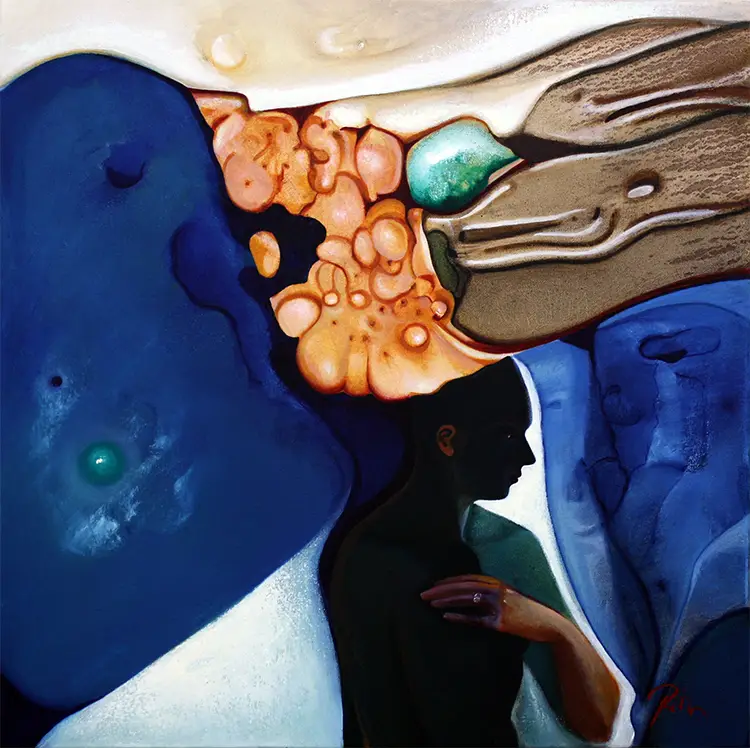
The Keeper and the Healing Canvas
Among the many works in her extensive oeuvre, The Keeper of the Living Water holds an especially sacred place. Created in 2006 during a time of profound personal grief and physical recovery, this painting became both a creative outlet and a source of solace. Petrescu began the composition shortly after the passing of her mother. Not long afterward, she suffered a serious accident that required a long period of healing. Throughout that difficult year, she found herself repeatedly returning to the painting, struck by the serenity it conveyed despite the chaos surrounding its creation. Composed with dreamlike transitions between landscapes, the canvas guides viewers through a visual journey akin to scenes in a poetic film. At the center stands a guardian figure, protecting a spring of water from unseen malevolent forces — a symbol both of inner resilience and metaphysical vigilance.
What makes this piece particularly powerful is its unexpected tranquility. Created without any conscious effort to impose calm or hope, it instead arose from an almost unconscious need for restoration. Petrescu often reflects on how this specific painting seemed to emerge from her hand in defiance of grief, a product of emotional resistance and intuitive healing. The composition carries a fluidity that suggests dream logic, yet every element is grounded in emotional truth. For viewers, the experience is not only visual but atmospheric, drawing them into a contemplative space where sorrow and peace coexist. It is one of her most successful examples of transforming pain into beauty, silence into structure.
This focus on emotionally charged abstraction, grounded by real life experience, underscores why Petrescu’s work resonates with such depth. Her preference for oil on canvas is more than a matter of tradition; it reflects a need for tactile engagement with the materials. Working with oil colors and solvents, she is able to manipulate texture, transparency, and depth with the precision that her subject matter demands. Each canvas becomes a vessel through which introspection, intuition, and visual experimentation meet. Rather than offering clarity or resolution, many of her works invite the viewer to sit with ambiguity — to feel rather than explain. The Keeper of the Living Water exemplifies this approach, holding space for emotion while remaining open to multiple interpretations, inviting a silent dialogue between painting and viewer.
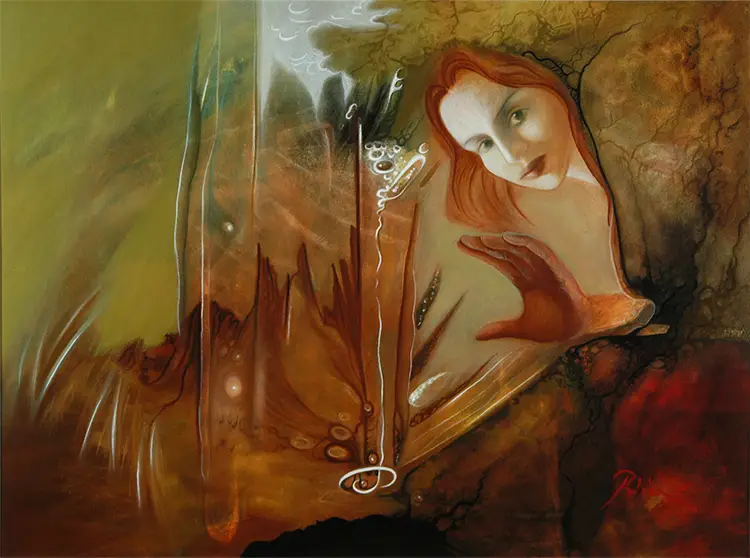
Rodica Alecsandra Petrescu: Toward New Horizons in Light and Thought
Petrescu’s artistic process is deeply personal, solitary, and entirely free from reliance on technological shortcuts or external prompts. Each day in her studio is a venture into the unknown, guided not by planning but by emotional impulse and evolving mental states. She does not sketch her ideas beforehand or use photographs or software to generate concepts. Instead, she allows each painting to reveal itself during the act of creation. This intuitive approach results in works that feel lived-in and emotionally honest. The process is sometimes unpredictable — she may finish a painting within hours or find herself immersed in one for months. At times, she works on two canvases at once, shifting between them as her energy demands. In all cases, the work is a form of therapeutic release, a translation of inner dialogues into color, form, and space.
Her aspirations continue to expand, guided by curiosity and a desire for meaningful connection. She is especially interested in engaging with Japanese audiences, whom she regards as particularly attuned to symbolic abstraction and nuanced metaphysical themes. The culture’s appreciation for silence, impermanence, and layered emotional states aligns naturally with the tone and depth of her work. Petrescu envisions future projects that bridge cultural boundaries, inviting new perspectives on life, death, and the in-between. She also seeks collaboration with organizations invested in the intersection of art and technology. For her, these partnerships represent a way to preserve emotional truth within the evolving landscape of digital innovation, offering new generations access to expressive traditions through modern platforms.
Recently, she took the first step toward this integration by launching a YouTube channel, Rodica A World, which offers audiences a curated view into her artistic process, thoughts, and specific works. Unlike static websites, the platform introduces each painting through a video format that combines visual storytelling with personal commentary. This initiative reflects her commitment to pushing her work beyond the confines of the physical gallery. It is both a digital archive and an evolving experiment in public engagement. Still, Petrescu views this as just the beginning. She envisions more ambitious projects involving immersive experiences and collaborative platforms that blend tradition with innovation. Her goal is clear: to ensure that the emotional and philosophical integrity of painting remains vital, visible, and alive in the century to come.
